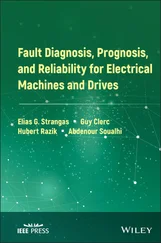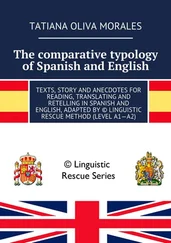1 Cover
2 Title Page
3 Copyright Page
4 Preface
5 Definitions and abbreviations
6 1 Introduction to Underwater Inspection and Repair 1.1 Background 1.2 Why Do We Inspect and Repair Structures 1.3 Types of Offshore Structures 1.4 Overview of this Book 1.5 Bibliographic Notes References
7 2 Statutory Requirements for Inspection and Repair of Offshore Structures 2.1 Introduction 2.2 Examples of Country Statutory Requirements 2.3 Standards and Recommended Practices for Steel Structures 2.4 Standards and Recommended Practices for Mooring Systems 2.5 Standards and Guidance Notes for Concrete Structures 2.6 Discussion and Summary References
8 3 Damage Types in Offshore Structures 3.1 Introduction 3.2 Previous Studies on Damage to Offshore Structures 3.3 Previous Studies on Damage to Fixed Steel Structures 3.4 Previous Studies on Damage to Floating Steel Structures 3.5 Previous Studies on Damage Types to Mooring Lines and Anchors 3.6 Previous Studies on Concrete Structures 3.7 Previous Studies on Marine Growth (Marine Fouling) 3.8 Summary of Damage and Anomalies to Offshore Structures 3.9 Bibliographic Notes References
9 4 Inspection Methods for Offshore Structures Underwater 4.1 Introduction to Underwater Inspection 4.2 Previous Studies on Inspection 4.3 Inspection and Inspection Methods 4.4 Deployment Methods 4.5 Competency of Inspection Personnel and Organisations 4.6 Reliability of Different Inspection Methods Underwater 4.7 Inspection of Fixed Steel Structures 4.8 Inspection of Concrete Structures 4.9 Inspection of Floating Structures and Mooring Systems References
10 5 Structural Monitoring Methods 5.1 Introduction 5.2 Previous Studies on Structural Monitoring Methods 5.3 Structural Monitoring Techniques 5.4 Structural Monitoring Case Study 5.5 Summary on Structural Monitoring 5.6 Bibliographic Notes References
11 6 Inspection Planning, Programme and Data Management 6.1 Introduction 6.2 Previous Studies on Long‐Term Planning of Inspections 6.3 Summary on Inspection Planning and Programme 6.4 Bibliographic Notes References
12 7 Evaluation of Damage and Assessment of Structures 7.1 Introduction 7.2 Previous Studies on Evaluation of Damaged Tubulars 7.3 Previous Studies on Evaluation of Damaged Plated Structures 7.4 Previous Studies on Evaluation of Damaged Concrete Structures 7.5 Practice of Evaluation and Assessment of Offshore Structures References
13 8 Repair and Mitigation of Offshore Structures 8.1 Introduction to Underwater Repair 8.2 Previous Generic Studies on Repair of Structures 8.3 Previous Studies on Repair of Tubular Structures 8.4 Previous Studies on Repair of Concrete Structures 8.5 Previous Studies on Repair of Plated Structures 8.6 Repair of Steel Structures 8.7 Repair of Corrosion and Corrosion Protection Systems 8.8 Repair of Mooring Systems 8.9 Repair of Concrete Structures 8.10 Overview of Other Mitigation Methods 8.11 Bibliographic Notes References
14 9 Conclusions and Future Possibilities9.1 Overview of the Book 9.2 Emerging Technologies 9.3 Final Thoughts References
15 Index
16 End User License Agreement
1 Chapter 2 Table 1 Inspection Intervals According to API RP‐2A (API 1993).
2 Chapter 3 Table 2 Levels of Corrosion (ABS 2017). Table 3 Overview of Previous Work on Damage to Offshore Structures. Table 4 Summary of Underwater Inspection Findings for 21 Steel Platforms in t... Table 5 Damage to Steel and Concrete Structures Requiring Repair. Table 6 Damage to Platform A. Table 7 Cause and Frequency of Damage to Fixed Offshore Structures. Table 8 Categories of Platform Defects. Table 9 Damage Caused by Hurricane Andrew (from Sharp et al. 1995). Table 10 Modes of Failure for Ship‐Shaped Structures.Table 11 Typical Defect Types for Tanker Structural Components (SSC 421).Table 12 Incident Frequencies for Semi‐Submersibles for the Period 1970–1997 ...Table 13 Causes of Failures for Both Chains and Wire Ropes (API 2019).Table 14 Overview of Identified Damage on Concrete Structures.Table 15 Damage Types and Typical Locations in Offshore Concrete Structures (...Table 16 Effects of Fouling on a Structure.Table 17 Growth Characteristics of Common Marine Fouling Species (HSE 2002).Table 18 Categories of Potential Causes of Damage for Three Different Types o...
3 Chapter 4Table 19 Overview of Previous Studies on Inspection Methods.Table 20 Reliability and Cost Estimate for CVI and MPI (MSL 2000).Table 21 Overview of Inspection Methods for Offshore Structures Underwater.Table 22 Typical Ranges of Potential of Reinforcing Steel in Concrete (RILEM ...Table 23 Deployment Methods for Inspection and Repair.Table 24 Methods for Inspection with Indication of Cleaning Needs and Deploym...Table 25 Competency Requirements (Based on the SIM Standards Mentioned in Thi...Table 26 CSWIP Categories.Table 27 Five Basic Maturity Levels Used in CMM.Table 28 Damage Causes and Suggested Inspection Methods for Fixed Steel Struc...Table 29 Examples of Defects on Concrete Structures in groups 4, 5 and 6 (Dep...Table 30 Damage Types and Inspection Methods Specific for Concrete Structures...Table 31 Typical Accuracies for Inspection Techniques (API 2019b).Table 32 Damage Causes and Suggested Inspection Methods for Floating Structur...
4 Chapter 5Table 33 Sensitivity of Natural Frequencies to Members Severance Based on Ana...Table 34 Examples of the Use of Structural Monitoring Methods (HSE 2006).Table 35 Structural Condition Monitoring Techniques.
5 Chapter 6Table 36 Example of a Long‐Term Inspection Plan for a Jacket‐Type Structure.Table 37 Example of a Field Work Sheet for Inspection of a Structural Part.Table 38 Important Structural Integrity Management Data.Table 39 Inspection Requirements for Structures of Different Risk Level.Table 40 The Phases of the Bathtub Curve and Inspections Needs.
6 Chapter 7Table 41 Variation in Static Strength Capacity with Crack‐Aspect Ratio. Sourc...Table 42 Prediction Accuracy.Table 43 Format for Non‐Linear Pushover Analysis.Table 44 Definition of Platform Robustness (MSL 2003),Table 45 Effect on Damage on Non‐Robust and Moderately Robust Fixed Offshore ...Table 46 Expected Reduction in RSR based on Robustness, Extent and Location o...Table 47 Risk Assessment Matrix for Offshore Concrete Structures.Table 48 Selected Types and Causes of Damage from Guideline V441.Table 49 Evaluation and Assessment Possibilities for Structures with Damage o...Table 50 Suggested Evaluation Methods for Steel Structures.Table 51 Evaluation Scheme for Concrete Structures.Table 52 Anomalies and Possible Evaluation Methods for Concrete Structures.
7 Chapter 8Table 53 Repair and Mitigation Approaches and Examples.Table 54 Overview of Previous Repair Studies Relating to Different Forms of D...Table 55 Information within the Repairs Database.Table 56 Analysis of structural elements requiring repair or strengthening.Table 57 Analysis of Method of Discovery, over Time.Table 58 Analysis of Method of Discovery, by Cause.Table 59 Analysis of Repair Types over Time.Table 60 Analysis of Vessel Impact Leading to Repairs by Vessel Type.Table 61 Repair Methods.Table 62 Comparison of Grouted and Bonded Repairs.Table 63 Local and Global Repair as Recommended by MSL (2004).Table 64 Applicability of Repair Techniques (MSL 1995 and MSL 2004).Table 65 Brief Details of Damage and Repairs to Platforms.Table 66 Summary of Repair Types.Table 67 Results of Repairs to Concrete Specimens.Table 68 Slant Shear Test Results.Table 69 Results of Tests.Table 70 Repair Options for Ship Structures as Provided by SSC (2000).Table 71 Results of Repair Tests.Table 72 Criteria for Selection of Repair Options.Table 73 Advantages and Disadvantages of Individual Repair Techniques.Table 74 Repair and Reinforcement of Stiffened Plates.Table 75 Repair Methods for Cracks and Insufficient Fatigue Life in Steel Str...Table 76 Repair Methods Suggested for Overload Damage and Insufficient Streng...Table 77 Repair of Corrosion Damage in Steel Structures.Table 78 Repair Methods for Other Types of Damage for Steel Structures.Table 79 Causes and Consequences of Damage and Underwater Repair Solutions.Table 80 Typical Methods for Applying Cementitious Materials.Table 81 Anomalies and Possible Evaluation Methods for Concrete Structures.
Читать дальше












